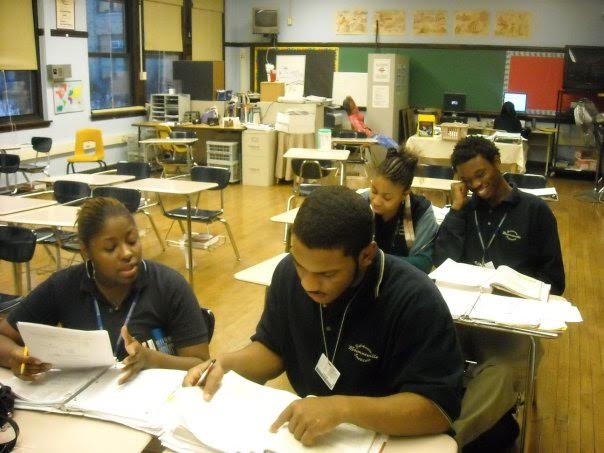Studying re-entry programs turned me into an abolitionist and a revolutionary. Mass incarceration cannot be eliminated without radically transforming the structure of our global society. Equity and democracy cannot happen under our current system of racial capitalism: a system that thrives off of concentrated power, exploitation, displacement, dispossession, and violence. The US could create millions of re-entry programs, but if we send the recently-released back to communities that don’t have fully funded schools, quality good paying jobs, or adequate healthcare facilities, then we are simply setting those folks up to fail.
— Robin Wonsley
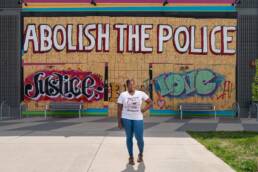
Table of Contents
One Goal: Escape Chicago
I WAS BORN in 1991, on the southside of Chicago, in a predominantly working-class Black community. For the first eighteen years of my life, I grew up surrounded by Blackness. My neighbors, my school and my church were predominately Black. I was my mom’s only child and the eldest of two for my dad. Both parents and many of my extended relatives treated me like a child prodigy. They invested their dreams, time, and resources into me, in hopes that I would be the one in our family to escape Chicago. I still don’t know why. It could have been that my parents grew up in dire poverty and they simply wanted better for me. It could have been that my parents did not want to see me work multiple minimum wage jobs or twelve-hour shifts in order to make ends meet, like they had to do. It could have been that several of my relatives were swept up by local gangs and mass incarceration, and our family grew tired of tending to them when they were shot, harassed, and repeatedly imprisoned.
My childhood and adolescence was guided by one goal: to escape Chicago. My dad made sure I enrolled academic enrichment or college preparatory programs every summer. I didn’t like having my summer’s taken away, but my parents lectured me about the importance of education, how it would give me a pathway out of Chicago. I never questioned why my family stressed over getting me out of our city. I knew our ability to lead quality lives had been compromised by where we lived. I figured my life would be endangered if I stayed in Chicago.
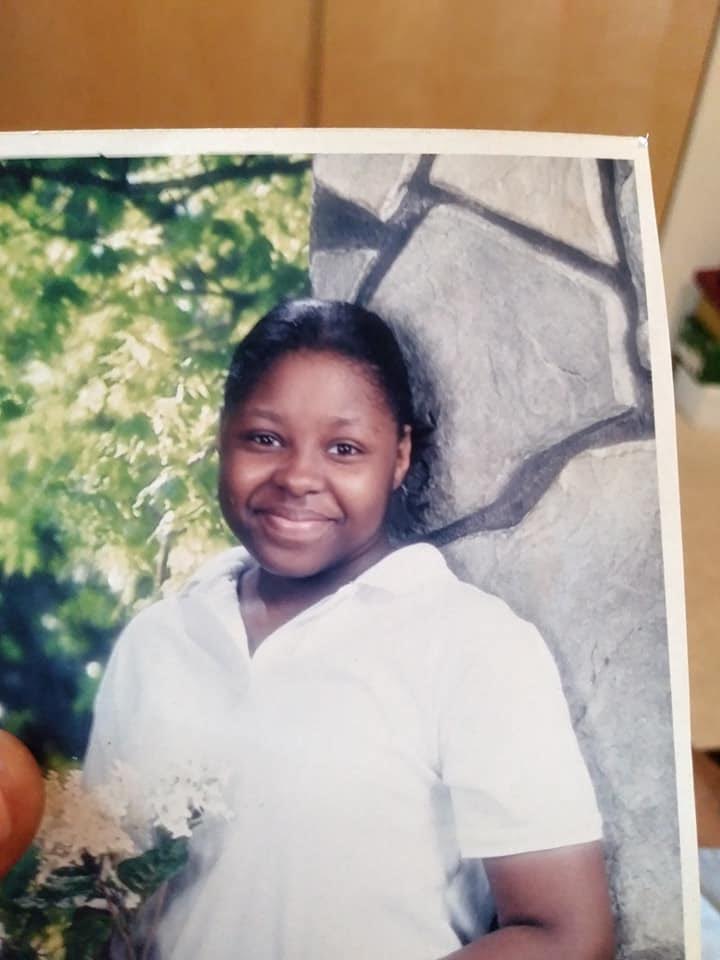
Forces Responsible for Poverty in Southside Chicago
I wish I knew then what I know now. I didn’t know there were specific people and institutions responsible for the mass poverty and violence that plagued Southside Chicago. For example, I remember when my mother and I first moved to 79th and Marquette Avenue in the late ’90s, our neighborhood was quiet. Neighbors would leave their doors unlocked. I could leave my bike and toys outside overnight, and find them where I’d left them the next day. Then something changed; new residents moved into our block. People started hanging outside and loud fights became a commonality. Break-ins became a frequent occurrence. Gunshots and loud music dominated our street. A stray bullet busted one of the mother’s car windows. I was not allowed to play outside. My mother constantly complained about “those” people ruining our once good neighborhood; and her frustrations eventually forced her to pick up overtime hours and odd jobs so she could move us somewhere else. I never questioned what she meant when she talked about “those” people.
I know now that “those” people were poor and working class Black folks who had been settled and confined to subpar high rise public housing projects developed during the late 60’s, when federal and municipal elected officials resolved the best way to handle poverty, racial inequality, and housing insecurities was to separate poor Black people from the general public and house them in multi-unit high rise buildings that were substandard and insolvent.Black people were herded into projects such as the Robert Taylor Homes, where my father grew up, the Cabrini Green Homes, and the Ida B. Wells Homes. There was nothing homey about these high-rise ghettos. By the early ’90s, elected officials decided to drastically cut public assistance programs, which included housing subsidy programs, and thus began the journey of privatizing public housing. This led to the demolition of high rise projects in Chicago. Thousands of poor Black families—many of whom spent decades living in these urban slums—found themselves instantly uprooted and dropped into random neighborhoods, like the one where I once played outside freely.
I didn’t know that governments and the leaders elected to oversee them, were largely responsible for the destabilization of Black communities and Black life in Chicago. Instead, I believed Black folks were to blame for their collective demise. I internalized these conservative views even more once I got to high school.
Seeing Structural Inequality on the Chicago Bus
As a teenager, I had more freedom to explore the city. I got my hyper-protective mother to allow me to start using public transportation.
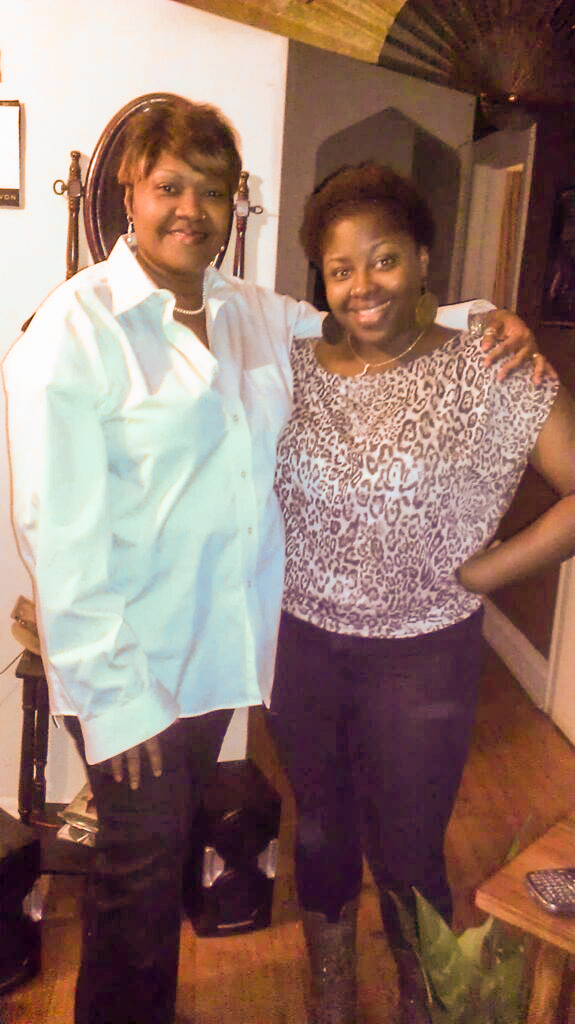
On my bus rides to school, I could fully witness the “deficits” of my community—vacant lots and homes, makeshift burial sites honoring those recently killed, an abundance of liquor stores, check-cashing stores and pawn shops, homeless folks, drug addicts and dealers.
As a teenager, I couldn’t connect these “deficits” to Chicago’s history of racism and racial segregation. To experience Chicago’s racial apartheid, all one had to do was take the red-line train. From 95th until 35th, Black people were the primary occupants. At 35th, Asian folks came on. You typically wouldn’t see a white person until you hit Roosevelt Avenue. The world would feel like it had completely transformed when you landed on Roosevelt Ave. in downtown Chicago. You would go from seeing drug addicts and public housing projects, to seeing tall shiny buildings, suited workers, and police officers who actually looked like they are trying to protect people. Instead of asking why white people got Emerald City while Black and Brown folks got ghettos, I figured there was something inherently wrong with Black people. I assumed we were at fault for our community’s many “deficits.”
I adopted a deficit mindset, which caused me to view us as the problem. I wanted to distance myself from poor and working-class Black folks. I strived to prove that I was different from us. I excelled academically to prove that I was one of the Black folks who had potential, and was worthy of a quality life. I sought approval from local authority figures—teachers, administrators, mentors—who could aid me in my escape goals. I began to see my own people as enemies. I took to heart the crabs in the bucket analogy. Instead of questioning the existence of the bucket, my main focus was to not be stuck with the other crabs. I wanted out of the bucket.
Education: my Escape Ladder
All those years of summer college prep courses and my ambition to escape us finally paid off in 2009. I was awarded a Posse Fellowship, and a full tuition scholarship to Carleton College in Northfield, Minnesota. I didn’t know where Northfield was, I just knew it was free, a great school and not in Chicago—away from us.
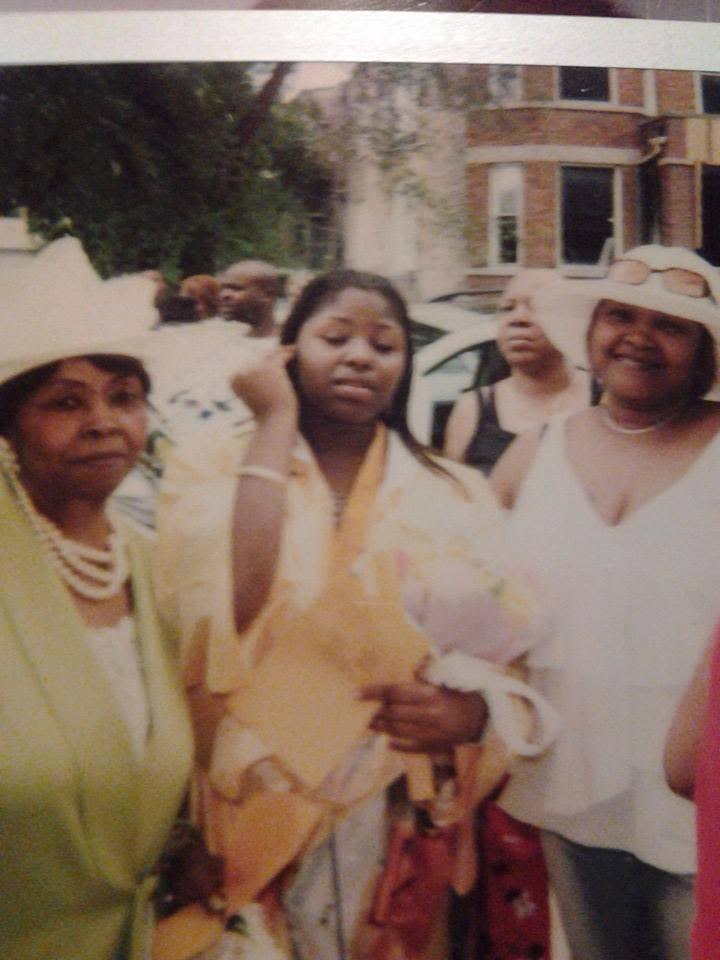
Identity Unraveling at Carleton College
When I got to Carleton, I was like, “I made it and I’m never going back. I’m going to make some money and move my family out of Chicago.” My deficit mindset had now transformed into pure individualism. I believed since I was able to escape, there was nothing stopping others who also wanted more out of their lives from doing the same. I began to seek mentorship from Black folks who also had succeeded in their individualistic pursuits; you know, those who were climbing the ladder, going into corporate America, or starting (Corporate) nonprofits that encouraged people to become self-sufficient.
I distanced myself from my own family. I told my mom, “Don’t give me updates about the family. That is a stressor. I left that behind. They need to get themselves together, like I did. If I did it, they could too.”
It’s hard to pinpoint the multiple times when my individualistic politics became shaken. I do know most of them occurred while I was at Carleton. I learned there is not a us and I, but rather a us and them: us being marginal, poor, and depraved Black and Brown folks, and them being entitled, (new)liberal, and wealthy white folks.
Carleton College is the epithet for them—the college was not only predominantly white, but over 80% of students came from households whose average annual income was more than $150,000. Class differences were apparent my first few days on campus. At one of my orientation events, a parent asked if they could pay for their child’s full tuition that day. Keep in mind that Carleton’s tuition averaged around $50,000 per year. I couldn’t believe someone had $250,000 to hand over.
Performative Activism
My peers and professors reminded me I was one of us. In the cafeteria, White students sat amongst themselves. Whenever I shared that I was from Chicago, a white student would ask, was I from the hood, did I ever see someone get shot, was I given a diversity scholarship as part of my admission. A professor told me they would make sure to not grade my writing too harshly because they knew urban public schools in Chicago did not prepare me for the academic rigor of their class. I had to swallow a hard truth; my prior academic accolades, enrichment courses, and my individualistic ethics held no significance in the eyes of my peers and some faculty. They didn’t view me differently from the poor and working class Black folks I tried so hard to distinguish myself from. In fact, they constantly reminded me that I did not belong at Carleton—in their space. In their worldview, there was them and then there was us, and I belonged with us.
To challenge their perceptions about us, several of my Black friends and I threw ourselves into performative activism. We thought that if we exposed our White liberal peers and faculty to various aspects of Black culture, their understanding of and relationships with us would change. We hosted cultural events that required Black people to share their traumas, and engage in a lot of dancing and singing. At that moment, we didn’t realize that we were asking Black folks to perform unnecessary labor just to demonstrate and prove their humanity.
Exposed to Critiques of Capitalism
Over the course of the next two years, I took several humanity courses, such as Intro to African American Studies and Women Studies courses. These courses helped to unravel my entire worldview. I began to develop a radical analysis of the world. I learned about society’s power brokers, and the ways in which they create conditions of poverty, inequality, violence across the globe—things that I thought were the byproducts of individual decisions. I was introduced to a variety of revolutionary scholars and activists such as W.E.B. Du Bois. Sadly, I had heard of Dubois throughout elementary and high school, but had never read his work. This unfortunately applied to Martin Luther King Jr. as well; I had grown up learning that MLK was this significant civil rights figure during a time of extreme racial inequality, but was never exposed to his political writings which drew from socialist, communist, and other revolutionary philosophies.
For the first time in my life, I was exposed to critiques of capitalism, patriarchy, and imperialism. This helped to frame my lived experience in Chicago; the rich and powerful directly benefited—via profits—from the closure of Chicago public schools, from the decimation of public housing, from the expansion of retail and fast food chains on the Southside, which barely paid workers minimum wage; from the misdiagnoses and overmedication of Black youth, from the constant imprisonment of poor Black men, women, and youth. Black folks suffering and exploitation yielded profits and selective freedoms for the white and wealthy.
The Occupy Movement (2011)
The Occupy movement sharpened my analysis of capitalism and expanded my activism beyond performativity. I was introduced to the movement by Robert Stephens. Robert was Black students’ Johnny Cochran at Carleton. Robert helped Black activists navigate Carleton’s institutional and political terrain, showing us how to leverage it to fund pro-Black and anti-racist events and programs.
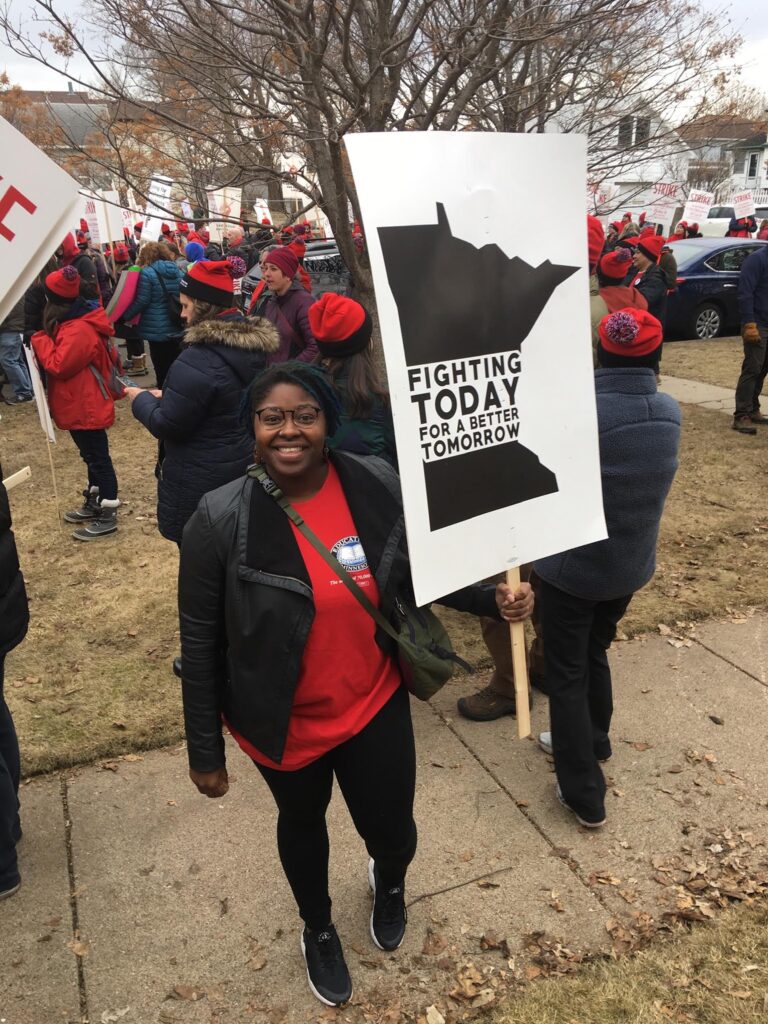
Upon graduating from Carleton, Robert moved to DC to start law school and got involved with the local activist scene. He wrote and shared articles about how the wealthy one percent were the real culprits behind the recession, foreclosure crisis, and mass unemployment.
A Facebook video of Robert getting arrested popped up on my timeline. He was standing before the bank that foreclosed on his family’s home after unexpectedly tripling their mortgage interest rates. That same bank had received a multi-billion dollar bailout from president Barack Obama, while his family lost their home and the wealth they’d worked decades to build. The Occupy Movement that exploded days later, forced me and many of us—the 99% percent—to question a system that seemed to only benefit the 1%.
Access to Resistance Movements in Europe
In August 2011, I began a six-country Gender Studies program in Europe. The program connected students to resistance movements taking place across Western Europe. In Turkey, the state was still undergoing a civil war against Muslim and Kurdish residents and disidents. While there, students were introduced to a resistance group composed of Kurdish mothers who had children fighting and/or killed in an ongoing civil war. The Occupy Movement had spread to Western Europe. I attended my first Occupy protest in Germany.
I also got to experience the effects of past and current European right-wing movements. Two days after visiting the Auschwitz concentration camp in Poland, I was chased down the street by neo-nazi’s. This was a startling experience, especially since I had never encountered a public, aggressive white supremacist in my life; not even in segregated Chicago or at my predominately White college.
At the end of my abroad program, I came to realize that the struggle for liberation from racist, capitalist, and imperialist systems stretched way beyond the US. Black and Brown folks in Europe, Asia, and Africa had been screwed over by the same culprit—wealthy, greedy, white capitalists and imperialists.
Trayvon Martin and Black Lives Matter
In 2012, Trayvon Martin was murdered. For centuries, Black people have been targeted, victimized, and murdered by our criminal justice system, and its foot soldiers—law enforcers. But, Trayvon’s murder touched a massive trigger point for millions of disheartened Black folks, especially young Black folks. Street protests would ultimately give rise to the Black Lives Matter Movement, affirming the value of Black lives, while challenging the (criminal justice) systems that authorize the annihilation of Black life and community.
The emergence of BLM further radicalized my worldview. My friends and I immediately ceased our shucking and jiving campus events, and started hosting forums, conferences, and workshops on police brutality and the prison industrial complex. We brought legal scholar Michelle Alexander to Carleton to speak about the New Jim Crow. Many of our white liberal peers started showing their true colors, and their underlying conservatism. A white student even published a campus news article that berated Black people, and used the N word. I and many other Black students challenged the papers’ editors and campus administrators to hold the student accountable. Some white students publicly supported the racist student.
Studying Re-entry from Prison
Around this time, my cousin—a brother to me— was released from prison. He had served close to 15 years in prison over the course of his 32 years of life. As they had done over the past two decades, my family came together to figure out how to support our loved one with his reintegration journey. Unlike prior times, my cousin was successful this time around. After graduating from an anti-recidivism program, my cousin was referred to the Chicago Transit Authority for a job, which he secured.
Individualist Re-entry Programs in My Chicago Neighborhood
My cousin’s reentry journey inspired my scholarship and activism at this time. I partnered with our Intercultural Department to organize a service trip. Myself and ten other Carleton students went to Chicago to help renovate a new community center in Englewood. We learned about the impacts of criminalization and mass incarceration from the founder, Geraldine Smith.
Smith was the second woman sentenced to death row in Illinois. She had recently received a full pardon from the Governor after serving 20 years in prison. She wanted to make sure that no Black woman, man, or child experienced life behind bars, and hoped that the center would help connect Black residents to the resources they needed to lead quality and productive lives.
Geraldine’s story and community work inspired my senior thesis, which focused on reentry programs in Chicago that strived to combat mass incarceration. Alot of them were Christian-based organizations, and framed their programming around individualistic and Christian concepts. These programs were based on the idea that incarceration was the result of bad decision making and lack of Christian faith. No systemic analysis was incorporated or considered. They did not offer viable solutions towards eliminating incarceration and recidivism.
Researching Post-incarceration Re-entry Programs Globally
I held onto the belief that mass incarceration could be eliminated, and that this work was happening somewhere in this world. That passion led me to win a Watson Fellowship — similar to a Fullbright— which funds recent college graduate students’ passion projects. I went to Canada, Australia, South Africa, and Ireland to study their anti-recidivist efforts and movements. I was horrified to discover that each country had adopted US retributive penal practices. These countries who once had small prison populations, had prisons overflowing—typically with poor folks, Aboriginal and Native folks, Black folks, and immigrants.
That project drastically transformed my consciousness. I realized that mass incarceration cannot be reduced and/or eliminated without radically transforming the structure of our global society. Or to simply put, equity and democracy cannot happen under our current system of racial capitalism; a system that thrives off of concentrated power, exploitation, displacement, dispossession, and violence. The US could create millions of reentry programs, but if we send the recently-released back to communities that don’t have fully funded schools, quality good paying jobs, or adequate healthcare facilities, then we are simply setting those folks up to fail. When it comes to recently-released Black and Brown folks, how do you re-integrate people who were never integrated to begin with?
White Neo-Liberalism at the University of MN Women’s Center
After my Watson Fellowship, I eventually made my way back to Minnesota to accept a position at the University of Minnesota’s Women’s Center. I was super broke at this point. I took my last few dollars to purchase a one-way Megabus ticket to Minneapolis and proceeded to live off of my credit cards and the generosity of close friends until I received my first paycheck.
Working at the University’s Women’s Center was a traumatic experience. Tamir Rice was murdered during my third month on the job. Students and allied faculty organized several actions to protest the US and the University’s treatment of Black and Brown students and staff. University administrators were silent the entire time, even the Director of the Equity and Inclusion Department — who earned $200,000 a year—and was debuting a new book about racially-charged police shootings, launching a national book tour.
After months of being gaslighted, micro-managed, and professionally berated by my queer white feminist manager, I was fired. That experience left me emotionally, spiritually, and mentally broken; but it did not take away my passion for community activism and service.
Non-profit Power Brokers in the Twin Cities
While unemployed, I began consulting and volunteering with several nonprofit organizations. I would quickly learn something new about Minneapolis’s political landscape; nonprofits are among the top power brokers in this city. Whereas the Chambers of Commerce represent the interest of corporate (and sometimes small) businesses, nonprofits supposedly represent the needs of the racially, economically, and sexually marginalized. They secure millions of dollars each year in grants and contracts to serve these communities, and many nonprofit staff and leaders state they are committed to “putting themselves out of business.” In actuality, some non-profits operate so that Minneapolis’s racial and economic inequities persist and they can stay in business.
Jamar Clark
In November 2015, a young Black man named Jamar Clark was murdered by two law enforcers in North Minneapolis. His death set our local BLM movement ablaze, and resulted in a 18-day occupation of the 4th Precinct Police Station. Like so many Black folks, Jamar’s death sparked a fire in my soul. My non-profit consulting and volunteering started to feel insufficient in advancing the larger fight for racial and economic justice in Minneapolis. I felt a calling to do more.
I started attending anti-racist and police brutality community forums, BLM actions and protests. I eventually joined the Justice for Jamar Coalition, and Socialist Alternative (SA). Unlike my non-profit experiences, these organizations were practicing what they preached. They organized from an anti-capitalist analysis and praxis, that built power amongst poor and working-class Black and Brown folks. Shortly after joining SA, I was offered a lead staff role with 15Now MN, which was part of a coalition of progressive organizations—CTUL & NOC—leading the fight for a $15 minimum wage in Minneapolis.
#15Now Minimum Wage Campaign
This campaign was life changing. I never thought I would be able to be part of a powerful anti-capitalist, socialist, and Black and Brown-led campaign; especially one that would fiercely take on our city’s Fortune 500 companies and their City Hall goonies. But, through building a powerful, resilient, and committed base of Black and Brown workers and union members and leaders, we were able to overcome the numerous blockages that city council members and corporate leaders threw our way, and won a $15 minimum wage in Minneapolis, and in St. Paul.
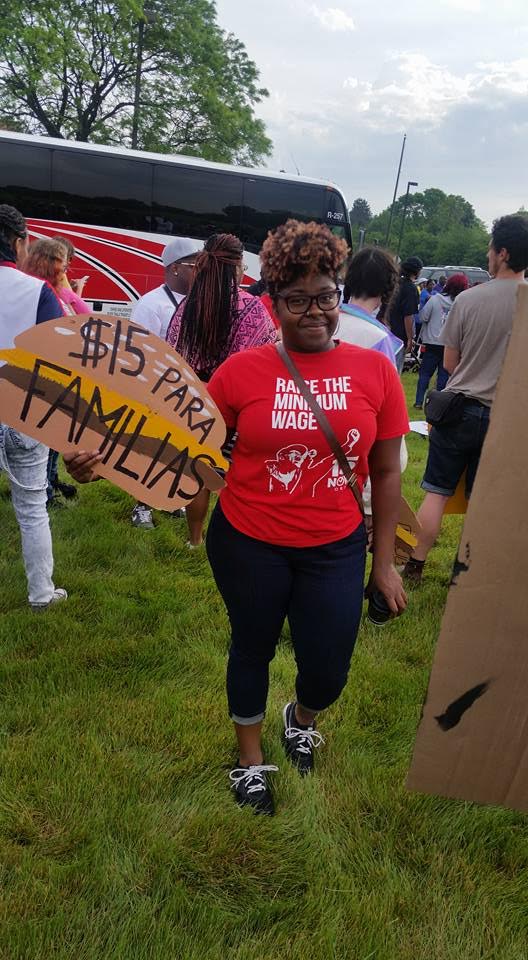
Becoming an Abolitionist and Ph.D Candidate
The $15 minimum wage campaign showed me what transformative power looked like, and affirmed for me that equitable and democatic demands and visions can be realized. I mean, if our small, progressive, worker-led coalition could launch a successful attack against wage exploitation in our city, then our movements can definitely bring about the end of mass racialized incarceration, and possess the potential to abolish our rotten system of racial capitalism.
This optimism led me to pursue a Ph.D in Women and Gender Studies. I’m studying and researching domestic and global resistance movements, and the efforts, tactics, and strategies they’ve employed to abolish and/or weaken capitalist systems, and bring about new equitable, restorative, and democratic realities and structures.
My scholarly and organizing experiences have helped me realize and accept that change is not linear. Resistance movements are only birthing vessels. For instance, Bernie Sanders would not have been able to advance his widely successful 2016 Socialist and populist presidential campaign without the 2011 Occupy Movement, which raised the public consciousness about the 1% billionaire class destructive powers and interests.
Proactive Vision
Our movements should strive for a proactive vision, while reacting to everyday crises. We must never lose sight of the world we deserve, and need to build. If we do forget this, movement members and leaders will constantly get pulled into a cycle of saving systems that harm, exploit, and erase us. We must also broaden the us. As much as I want this to be the case, I know Black people alone cannot take down the system of global racial capitalism. Our movements must strive to link the struggles and collective interests of Black and Brown folks, of LGBTQA communities, of unionized and hourly workers, and immigrants.
I have a tattoo on my upper right arm that says that the Revolution is My Boyfriend, it’s a mantra that best describes my dreams and passions. In every facet of my life, I strive to spark and advance revolutions- in my own healing journey, my activism, and in my scholarly pursuits.
I understand that such a commitment requires I become comfortable with messiness and uncertainty. I am unsure where this path will take me in life, but I’m confident my life’s work will be rooted in manifesting an equitable, restorative, and democratic society.
Update following the Murder of George Floyd: Minneapolis Uprising
On Monday, May 25th, I sat in my car, paralyzed by an image that appeared at the top of my Facebook timeline: Officer Chauvin, with his knee buried in George Floyd’s neck. I tried to regain control over my breath and nervous system. Tuesday morning news outlets reported that George Floyd’s death was the result of medical distress. At this point, millions of people across the world saw the video of George’s public execution. What they saw directly contradicted the police report. Minneapolis residents understood these false allegations were grounded in MPD’s extensive history of negating responsibility and accountability for brutalizing and executing Black and Brown men, women, and youth.
The COVID-19 Context
Before George’s murder, COVID-19 had revealed the exploitative system of racial capitalism. Amazon owner Jeff Bezos tripled his company’s net worth during the first three months of the pandemic. Hourly and healthcare workers—many of whom are Black, Brown, and women— worked without hazard pay, relief assistance, personal protective equipment, or sick time. African Americans represented 23% of COVID-19 related fatalities while making up 13% of the U.S. population. Now state repression and violence compelled BIPOC and non-POC residents to risk their lives to protest the unwarranted execution of George Floyd.
Mass Protest after the Murder of George Floyd
On Tuesday, local civil rights and anti-police brutality groups called for a mass protest for that evening. It would draw over 20,000 people. It began in front of Cup Foods on 38th Street and Chicago Avenue, where the murder took place. Thousands attempted social distancing while listening to speakers demanding justice. The crowd then marched towards the 3rd Precinct Police Station, which housed the murdering officers. Thousands of Black and Brown youth surrounded the station, leading chants, and songs. Several Black mothers spoke to the crowd about the racialized fears and realities of raising Black boys and girls. Overwhelmed with admiration, grief, and joy, I left the protest crying into my close friend’s arms.
Anticipating the Usual Police Murder Aftermath
I anticipated that civil rights groups would call for the arrest and indictment of the four officers. Rallies and actions would be held to pressure County Attorney, Mike Freeman, and other elected leaders to serve justice. Political leaders would call on the FBI to conduct an “independent” investigation. If a trial took place, it would yield an acquittal. Elected leaders would commit millions of dollars towards reforming and re-training the police. We would then go through this process all over again in a month or so, when the cops would murder another Black or Brown person.
As a socialist, I guide my political orientation and actions by the needs, dreams, and political interests of the working-class, and particularly Black and Brown, and queer communities. Racial capitalism thrives off the exploitation of our lives, labor, and natural resources. Forces that help to preserve and strengthen this system include: (1) Political Leaders, (2) Corporate/Private Big Business, and (3) Police & Military.
For decades, BIPOC and allied communities in Minneapolis, tackled the destructive and racists impacts of these forces through traditional political processes—elections/voting, lobbying, civil actions—only to win minor reforms.
Civil Unrest: Deciding How to Respond to Burning and Looting
Decades of unreconciled state repression and violence, coupled with George Floyd’s public execution/lynching, justifiably triggered forceful and destructive actions from Black and Brown folks and supporters. Early Wednesday morning, local businesses were looted and set aflame. A DSA comrade asked members to come and protect their home and business from looters. As my fellow DSA members began to coordinate who would protect our comrade, a different exchange took place on the same thread. One comrade shared footage of protestors being teargassed by officers at the 3rd Precinct. Another shared that a business owner killed a looter.
I understood and supported the actions of protestors. I knew the state would launch a lethal counterattack. As Socialists, our role is to not lead or pacify working-class and BIPOC communities, but to demonstrate active solidarity.
Bringing Supplies While Police Attack with Tear Gas and Rubber Bullets
By 12pm, we were at the Longfellow Market purchasing food supplies for 3rd Precinct protestors. Twin Cities Democratic Socialist of America (TC-DSA) and DSA National raised over two thousand dollars that morning, to pay for the supplies.
Just as we were unloading the supplies, police officers began shooting tear gas and rubber bullets into the crowd. I taped it on Facebook live until I began to feel the effects of teargas. I struggled to breathe and could barely see. My eyes burned. One of my DSA comrades got me milk to cleanse my face and escorted me to a safe shelter.
Minutes later, crowds returned to the 3rd Precinct. As I collected myself at my friend’s home, I reflected on the bravery and dedication of those protestors. I wanted to show up for them. My Venmo account showed more donations from my DSA comrades. I asked my friends to join me for another supply run.
Looking to Black Panther Breakfast Programs as an Example
By Thursday morning, most of the businesses surrounding the 3rd Precinct had been looted or burned. Protestors still occupied the area. I turned to my ancestors and past freedom fighters for wisdom and insights, skimming through autobiographies of Black Panther Party (BPP) leaders, Assata Shakur and Elaine Brown.
In the 1960’s, the BPP had launched a transformative political program that would both politicize poor and working-class Black residents, by tending to their basic material needs, which had been ignored by the state and corporate forces. The BPP Free Breakfast program was among their most powerful political initiatives.
Setting Up A Food Distribution Site
In the Hi-Lake area, protests and subsequent looting had forced all surrounding grocery stores to shut down, and it was not clear when those stores would re-open. Food and medical supplies were a major and immediate need in that community. A cadre of DSA members and I decided that we would start a food relief site.
We agreed that our site would provide food and household supplies to local residents and 3rd precinct protestors. One of our comrades found a location, scouting on bike, dodging plastic bullets and teargas. We needed volunteers to drop off groceries, go on supply runs, and prepare hot meals, all of which required money.
In less than 12 hours, we got the TC-DSA Food Justice Distribution Relief Site running. For two weeks, it provided groceries, supplies, and hot meals to hundreds of locals, protestors, and homeless residents who occupied the Sheraton Hotel and, later, the Sanctuary in Powderhorn Park.
Food with a Police and Corporate Agenda
After two weeks the political and economic landscape changed. Protestors no longer occupied the area. Random groups popped up to organize mutual aid and community events. Some of them were actually Astroturf groups formed by Target Co. and the Minneapolis Police Department to provide political cover for both. (Workers sued the Lake Street Target for wage theft in 2019.)
More non-Hi-Lake residents frequented our site. We questioned if we were still meeting the immediate needs of locals. We decided to close down, while we figured out how to re-align our Food Justice Program with the material and political needs of the Hi-Lake community.
On Defunding the Police
The Defund & Dismantle MPD Movement has garnered great momentum across the country and in Minneapolis. Still, many working-class Black and Brown residents are not in support of police abolition. Poor and Black and Brown communities perpetually lack the resources and social safety nets that weaken reliance on anti-Black systems of policing. Some fear that BIPOC communities will descend into chaos in the absence of an organized police force.
The TC-DSA Food Justice Program decided to link food access to political education and action. We wanted to offer Hi-Lake residents a space where they could learn about the destructive role police assume in our communities, and anti-policing alternatives.
Hi-Lake Community Political Education Meetings, July 2020
Beginning in mid-July, in addition to providing food and supply distribution services to local Hi-Lake residents, we will hold weekly community meetings. BIPOC groups will share their work around abolition, community defense, housing, and land reclamation, and the ways Hi-Lake residents can equitably and democratically rebuild and protect their communities.
Our purpose is to build confidence amongst Black & Brown and working-class people, that we are capable of protecting and caring for our communities. We have done so for many generations without the help of the police. I hope we will ignite a fire within Hi-Lake residents to band together and organize against the forces that aim to profit from the re-development of Hi-Lake’s Ground Zero. We need to demand that corporate businesses and city officials invest in Black and Brown lives by fully funding our community’s neglected social safety nets: housing, healthcare, food, and employment. You cannot support Black lives without investing in their wellbeing and livelihoods.


